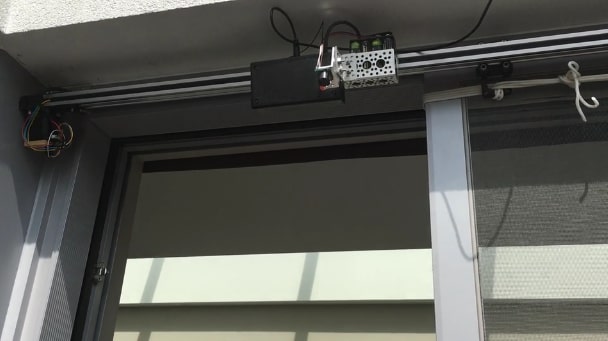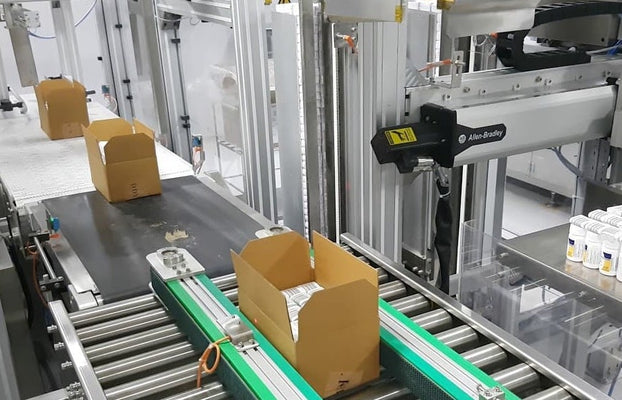Linear actuators are one of those simple bits of engineering that you likely take for granted.
But if you're business requires any kind of automation, you're using them. And you're not only using them, but they're vital to the success of your business. Linear actuators very simply turn the rotary motion created by motors into linear motion, or motion in a straight line.
They're used in most industrial applications and are vital pieces of any automation process. But if you're in the manufacturing business, you need to know how they work and why buying quality actuators can keep your business humming.
How Linear Actuators Are Used In Industrial Automation

How Linear Actuators Work
Motors produce rotary motion, which is great if for ceiling fans, but if you need your machines to move forward and backward then you're going to need a linear actuator. They work by taking that circular motion and converting it into linear, or forward and backward movement.
Once you've done this your machine can push, pull, slide, lift or drop items.
Even the simplest mechanical devices have actuators even common toys have some actuators. On a larger scale, when it comes to industrial automation, most of the processes we rely on are going to need actuators to make them work. Everything from electric sliding doors and windows to large-scale manufacturing relies on actuators.
If you want to get deeper into how linear actuators, work read our article that will give you a much deeper understanding of how these components work.

Industrial Automation Terms
Industrial automation is the process of getting machines to do the work of humans in the production of creating products. This can look like the armies of robots involved in car production assembly lines to the tiny robotic movements that create computers and cell phones.
Before whether you're building cars or phones, before you buy anything let's take some time to discuss some of the terms that come along with our industrial actuators to help ensure you get the right one for your job.
Force is basically the amount of weight our actuators can push or pull. In some models, the force can be as low as 15 pounds but in our industrial models can be as high as 22-hundred pounds.
There are two kinds of force worth considering: Dynamic force and static force. True to their names, dynamic force is the maximum force an actuator can apply to an object. Static force is a measurement of the amount of weight the actuator can hold when it's not moving.
Stroke is the length the linear actuator will be able to push or pull a device. In our industrial models, the stroke ranges from a low of 10 inches to a maximum stroke of 35 inches.
Power Supply, the actuators we sell, rely on a 12-volt power supply and we have a number of different models available. The more force your actuator is going to be manipulating the more powerful actuator you're going to need so make sure you get a strong enough power source for your job.
Before you buy anything, it makes sense to do some homework into how much force and stroke you need to accomplish the job. We have a handy calculator that will help you figure out exactly what you need for any job.

Industrial Applications For Linear Actuators
You'll find linear actuators in use throughout the industrial manufacturing process. In almost any application that requires moving something from point A to point B, that's a linear actuator providing that force.
You can see them working on most assembly lines moving products between moving belts or helping robotic arms lift and move things through a physical space.
On an industrial scale, linear actuators allow the cutting of wood, glass, paper, and metal. Not only does this reduce waste but it creates a much safer environment for your industry when machines instead of people are doing the blade work.
In industrial robotics, linear actuators are going to be what is most often allowing the robot to 'move.' Moving can look like a single robotic arm swinging along an assembly line. It can also look like a more sci-fi-looking humanoid robot actually taking steps. Linear actuators help to create that motion.
Actuators are also a huge part of the food and beverage industries because they allow the handling of food products in a sterile environment. They're going to play a huge role in packaging and handling all kinds of things from cans to actual food products. From dipping candy bars in chocolate to wrapping containers in plastic linear actuators are going to be doing most of the hard work in these industries.
Linear actuators have applications in farming through the use of planting technology and large harvester operations. In the energy industry, linear actuators allow solar panels to move with the sun. And in something as mundane as your automatic car windows wouldn't be possible without linear actuators.
On a tiny industrial scale, linear actuators can operate in small-scale environments in today's digital manufacturing arena. From soldering tiny contact points to assembling your next cell phone, linear actuators are doing the work of creating and manipulating electronic components in a tiny and sterile environment.
In all honestly, this doesn't really even begin to scratch the surface of all of the areas of manufacturing where linear actuators are being used. They're everywhere and put very simply they allow our modern industrial society to work as well as it does.

Buying the Right Actuator
At FIRGELLI®, linear actuators are our specialty. When it comes to industrial automation we have all the tools you will need to make sure your assembly line or robot keeps moving without a hitch. Our actuators come in all shapes and sizes and strengths so we're sure you'll find what you're looking for.
We're also a one-stop-shop for all the accessories everything you need to make your actuators work. From power supplies to mounting brackets, so simple switches we have everything you're going to need.
So check out our website, we're here to help. When you're ready to buy or if you have any questions please get in touch, and we'll do everything we can to make sure you have the gear you need.

